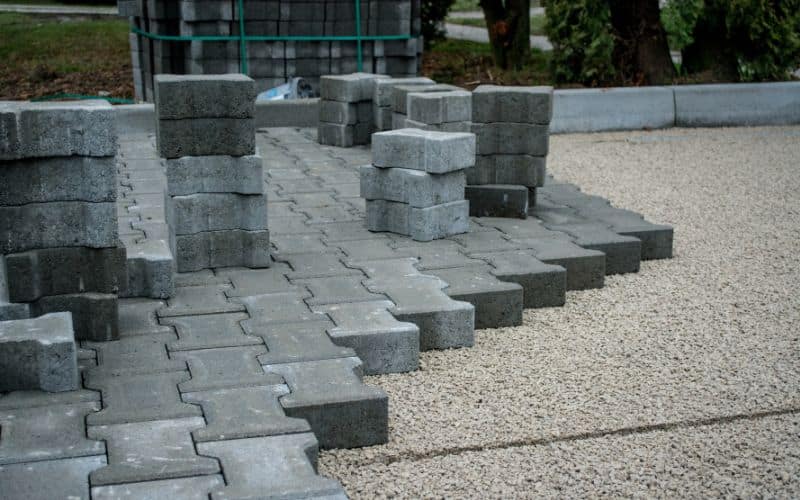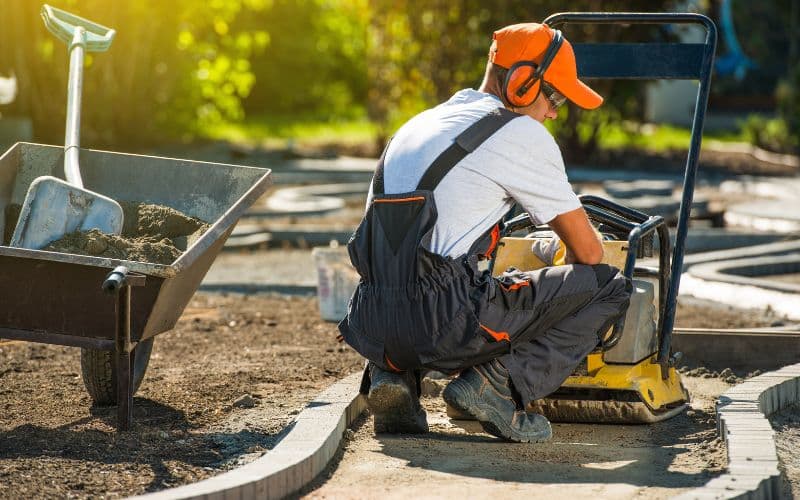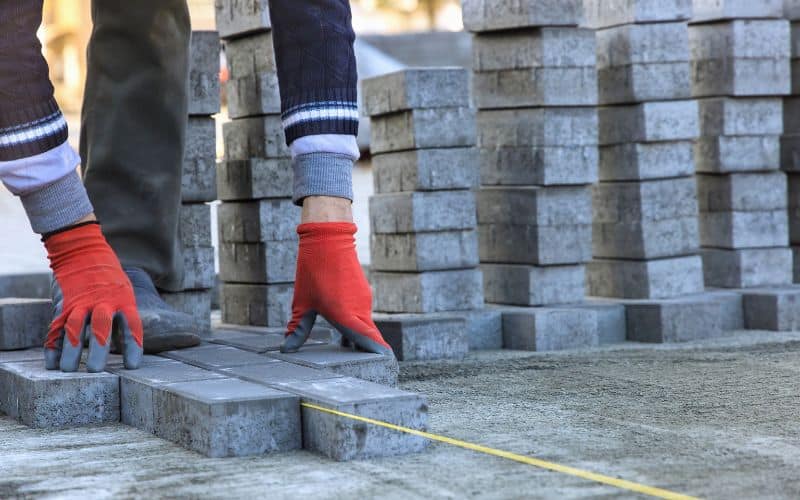
The Beauty and Functionality of Interlocking Pavers
Interlocking pavers are more than just a pretty face; they’re the backbone of any well-designed outdoor space. Whether you’re looking to spruce up your patio or lay a sturdy driveway, these pavers offer both aesthetic and functional benefits. But before you get too excited, let’s talk about the nitty-gritty of paver installation.
Why Choose Interlocking Brick for Your Patio or Driveway?
When it comes to creating a lasting impression with your outdoor spaces, interlocking brick is the darling of discerning homeowners. What sets it apart? For starters, its durability is second to none, making it ideal for areas that see a lot of action—be it kids playing on the patio or cars rolling down the driveway.
But it’s not just about toughness; it’s about practicality too. Interlocking brick is ingeniously designed to manage water runoff, preventing those pesky puddles that can lead to unsightly water stains. So, you get a surface that’s not just hard-wearing but also smartly engineered to keep your spaces looking pristine, rain or shine.
What is Bedding Sand and Why is it Crucial for Paver Installation?
Think of bedding sand as the unsung hero in the world of paver installation. It’s that layer of finely granulated material that serves as a cushion, nestling your pavers securely atop the base material. But its role is far more nuanced than mere cushioning. Bedding sand is your go-to for achieving that perfectly level surface, ensuring each paver sits just right.
Now, you might be wondering, “What’s the big deal about leveling?” Well, a level surface is essential for more than just aesthetics; it’s a key player in effective drainage. Without a well-leveled layer of bedding sand, you’re inviting water to pool in low spots, leading to drainage woes down the line.

How to Excavate the Area for Optimal Interlocking Paver Installation
Before you even think about laying those stunning interlocking pavers, there’s some groundwork to be done—literally. Excavation is more than just wielding a shovel; it’s an art form that sets the stage for your paver masterpiece. The goal here is to create a level playing field, and for that, a plate compactor is your best friend. This nifty machine not only compacts the soil but also ensures a rock-solid foundation that’s as level as a pancake. So, don’t just dig—excavate with purpose and precision to pave the way for a flawless installation.
Selecting the Right Base Material: What You Need to Know
If pavers are the stars of the show, then the base material is the stage crew that makes it all happen. This foundational layer is what keeps your pavers from shifting and sinking, so choosing the right mix is crucial. While there are various options out there, a blend of concrete sand and gravel often steals the spotlight. This dynamic duo offers the perfect balance of support and drainage, ensuring your pavers not only stay in place but also stand the test of time. So, when you’re picking your base material, think of it as casting the supporting roles in your outdoor drama—choose wisely, and the performance will be nothing short of spectacular.
The Role of Edge Restraint in Keeping Your Paving Stones in Place
Think of edge restraint as the bouncer at an exclusive club, keeping everything orderly and in its proper place. It’s the unsung hero that ensures your pavers don’t go wandering off, especially in high-traffic areas. Whether your outdoor space is a bustling driveway or a serene patio, edge restraint is your ticket to long-lasting stability. It’s the invisible hand that keeps your paving stones aligned, ensuring that your design remains as impeccable as the day it was installed.
Concrete Sand vs. Bedding Sand: Which is Better for Your Project?
Concrete sand or bedding sand? While both have their virtues, they serve different roles in the paver installation process. Concrete sand, with its coarser texture, is often the go-to for the base layer, offering solid support and facilitating drainage. On the other hand, bedding sand is the finesse player, with a finer grain that creates a smooth, even surface for your pavers to rest upon.
So, which one is the MVP for your project? It’s not an either-or situation. In fact, they’re more like a dynamic duo, each complementing the other’s strengths to give you a paver installation that’s both sturdy and stunning

How to Lay Interlocking Stones for a Durable and Aesthetic Patio
Laying interlocking stones is a meticulous process. You’ll need to ensure each paver is level and sits well in the bedding sand. Use a level tool to check your work as you go along, and don’t forget to compact the area with a plate compactor once you’re done.
Retaining Wall Considerations When Installing Pavers
If your project includes a retaining wall, you’ll need to consider additional factors like drainage and compaction. A well-constructed retaining wall can also serve as an edge restraint, killing two birds with one stone.
Common Mistakes to Avoid in Interlocking Paver Installation
- Skipping Excavation: Proper excavation is crucial. Don’t cut corners.
- Ignoring Drainage: Drainage is not just about water flow; it’s about the longevity of your project.
- Forgetting Edge Restraint: Without proper edge restraint, your pavers are going nowhere fast.
Conclusion: Your Next Steps for a Stunning Driveway or Patio with Concrete Interlocking Pavers
You’re now armed with the knowledge you need to tackle your interlocking paver project head-on. From selecting the right base material to understanding the importance of edge restraint and proper drainage, you’re well on your way to creating a stunning outdoor space that will not only look great but also stand the test of time.
So, whether you’re planning a cozy patio for weekend barbecues or a robust driveway that can handle vehicular traffic, remember that preparation is key. And if you ever find yourself in a masonry dilemma, just think back to this guide. After all, a well-laid paver is worth two in the bush.
Happy paving!








